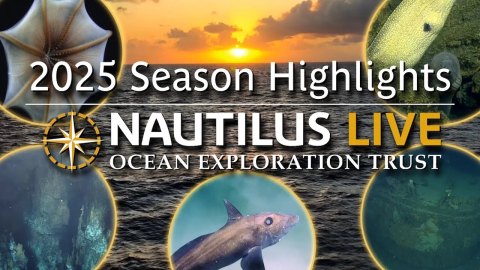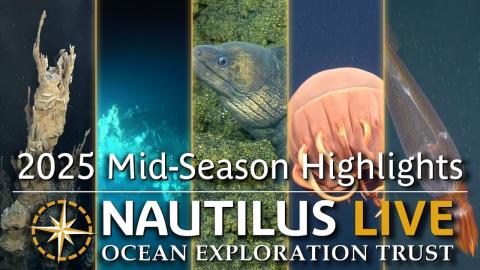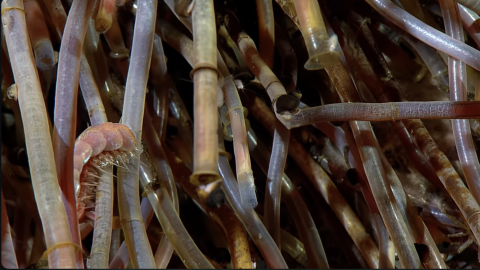Expedition in 60 Seconds: Mapping West Coast National Marine Sanctuaries
Only about 13% of our world’s oceans have been acoustically mapped. E/V Nautilus is equipped with a multibeam sonar and sub-bottom echosounder to collect bathymetric, surface sediment characteristic, subsurface geology and water column data. Satellites equipped with altimetry sensors have also been used to derive the bathymetry of the entire seafloor by sensing gravity anomalies of the sea surface that can be linked to topography (e.g. dip in the surface of the ocean over a trench). These types of seafloor mapping data is useful for identifying areas or features of interest, creating bathymetric charts for ROV dive planning and situational awareness, and locating hydrothermal vents and gas or oil seeps.
The Corps of Exploration will map unsurveyed areas and areas with low resolution data with our partners at the National Oceanic and Atmospheric Administration (NOAA). For this expedition, priority areas for seafloor mapping include Channel Islands National Marine Sanctuary, Monterey Bay National Marine Sanctuary, Greater Farallones National Marine Sanctuary, Cordell Bank National Marine Sanctuary, and Olympic Coast National Marine Sanctuary. Learn more about the 2017 Nautilus Expedition.

Seafloor Mapping the National Marine Sanctuaries
Only about 13% of our world’s oceans have been acoustically mapped. E/V Nautilus is equipped with a multibeam sonar and sub-bottom echosounder to collect bathymetric, surface sediment characteristic, subsurface geology and water column data. Satellites equipped with altimetry sensors have also been used to derive the bathymetry of the entire seafloor by sensing gravity anomalies of the sea surface that can be linked to topography (e.g. dip in the surface of the ocean over a trench).



